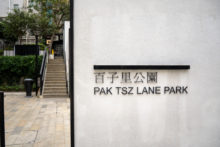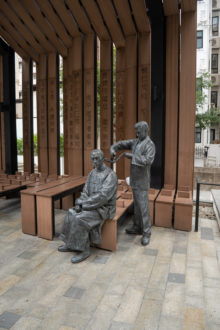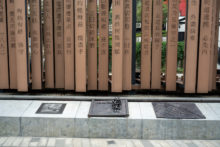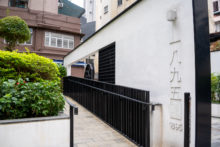Name(English): Pak Tsz Lane
Name(Chinese): 百子里公園
Category: Culture & History
Address(English): Pak Tsz Lane, Central
Address(Chinese): 中環百子里
Address Google Map Link: https://goo.gl/maps/cjE5XKZYKePhStHo7
Address longitude and latitude: 22.28343874230366, 114.15288252806624
Nearest MTR Station: Central MTR Station Exit C
Nearest MTR Station Google Map Link: https://goo.gl/maps/wbVjTnxMsyhxJY9Z9
Nearest MTR Station longitude and latitude: 22.28196693238672, 114.15825173948689
How far from the nearest MTR Station: 10 mins walk from Central MTR Station Exit C
Opening Hours:
MON 00:00 – 23:59
TUE 00:00 – 23:59
WED 00:00 – 23:59
THU 00:00 – 23:59
FRI 00:00 – 23:59
SAT 00:00 – 23:59
SUN 00:00 – 23:59
Recommended Time to Visit: Daytime
Accessibility Note: Easy access
Hong Kong is a relatively young city but has a rich history of dissent, stretching back to over a century ago. Pak Tsz Lane – a hidden garden in between the cramped buildings in Central, was just a dead-end alley in the 1900s but was secretly used for Chinese revolutionists that included Sun Yat-Sen to plan for a series of rebellions to overthrow the Qing Dynasty. To pay tribute to the 1911 Revolution’s Centennial, the site was transformed into a public space retelling the historic event that echoes the revolutionary spirits of Hong Kongers.

The social elites who received Western education like Sun Yat-Sen, Yeung Ku-wan, and Tse Tsan-Tai, felt the urge to reform China given the inability of Qing to confront foreign suppression and the sheer stubbornness in refusing Western values. Compared to the politically sensitive mainland at the time, Hong Kong, governed by the British, was with no doubt seen as the safest ground to discuss political reforms and to plot rebellions. Such acts could still be very dangerous and even led to saddening sacrifices, which Yeung was assassinated in 1901. But the pioneering leaders managed to establish the two most prominent revolutionary organizations – Furen Literary Society, which was merged into the Revive China Society, in the secret corners of the colony.

Striving prosperity for China based on learnings from the Western civilization was aggressively opposed by rampaging mobs of Chinese nationalists during the Boxer Uprising in the 1900s, where the Qing dynasty declared war on the eight foreign powers. The Qing troops and so-called Boxers would have opened fire on embassies and attacked foreign officials, traders, and even missionaries. The insurrection was too tense and brutal so much so that many of them had to flee to Hong Kong – the safe haven at the time, to prolong their life for the better. Meanwhile and ironically, most victims during the rebellions were Chinese Christians.
Safe to say – different thinkings did play a vital role in driving positive social change for both Hong Kong and China. Imagine if there was no place that could accept new learnings from the West at that time, retaining the conservative social order, both places would not be where they are now. Only because of being socially different from late imperial China, Hong Kong became the think-tank breeding cutting-edge political thoughts by many forward-thinking elites, having formed a vision for China’s modernization and even set a strong basis for democracy in Taiwan. If Pak Tsz Lane was still in the Chinese territory, the 1911 Revolution probably would not have existed; or worse, the Father of Modern China Sun Yat-sen would have experienced the same terrible thing as Yeung did.


A hundred years have passed. Chinese history of confronting foreign influences repeats itself in the 21st century. Hong Kong again ceases to be the last safe haven but faces an unstable future from China’s unprecedented control over its autonomy. The vibes of the long-time rebel city revive and Hong Kongers take to the streets demanding change. We have learned well from history that various ideologies lead society to new paths – so, could zero tolerance for opposition really help uncork the bottleneck of the uprising tension between two places? It only leaves us to ponder who would suffer greater loss eventually.

#central #Paktszlane #culture #history #discoverhongkong #explorehongkong #visithongkong #hongkongtravel #ilovehongkong #heritage #hongkongheritage #culturetrip #hongkongculture #hkhistory #hongkonghistory #hongkongstory#instagrammable #hongkonginsta #instahk #visualhongkong #hkphotography #awesomehongkong #hkinstagram


